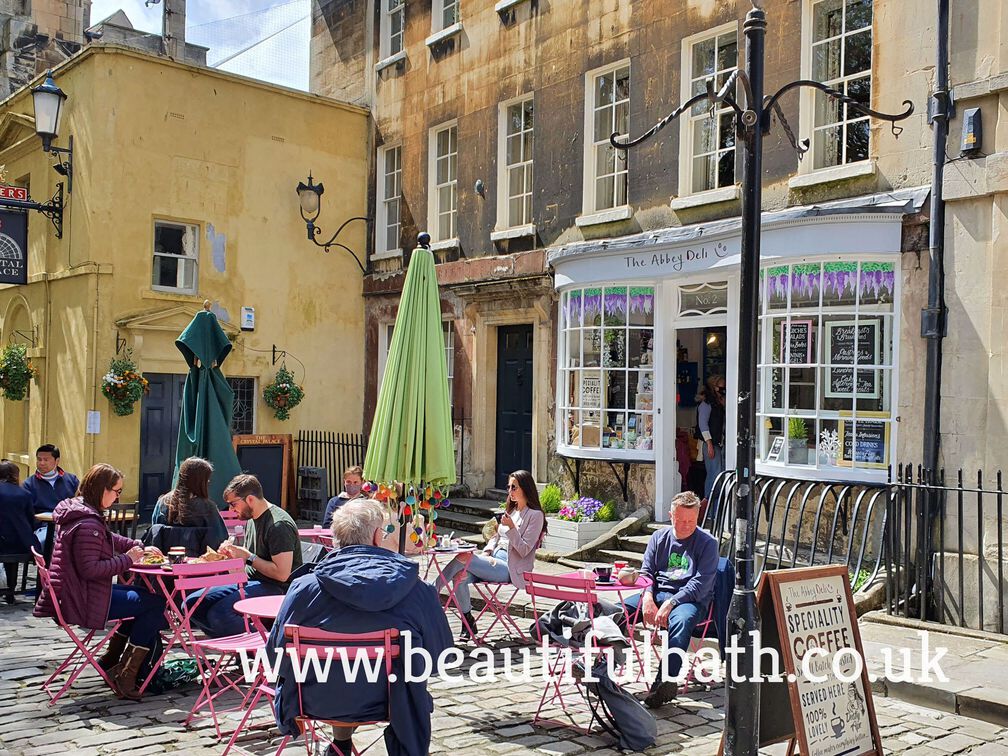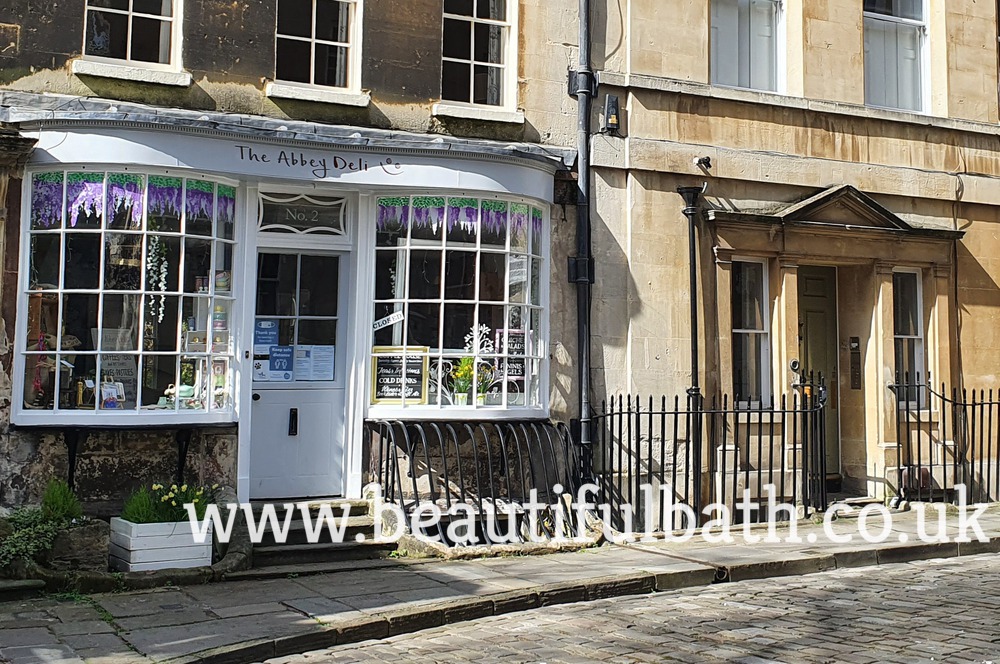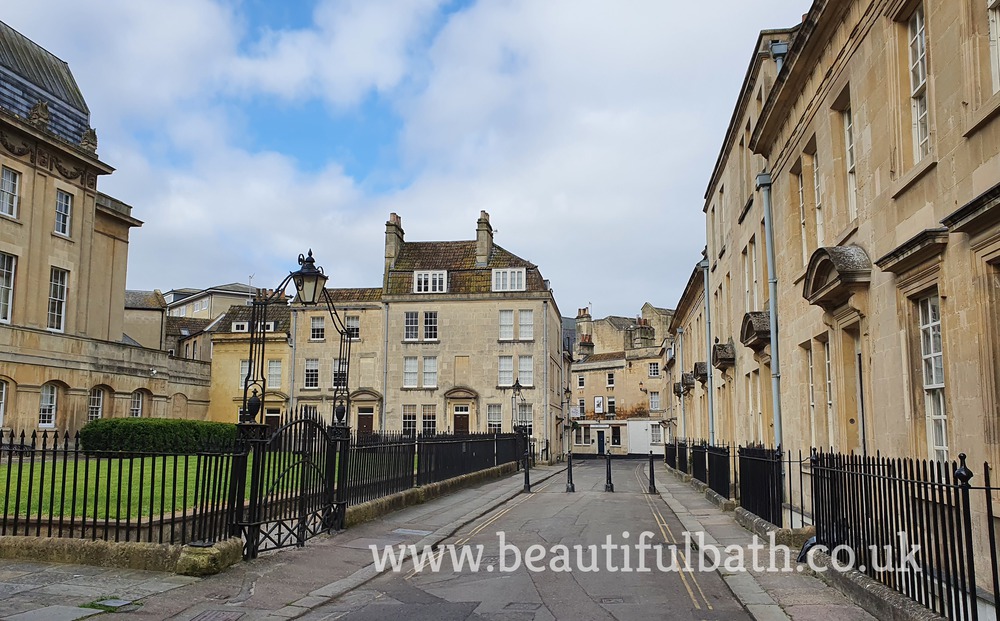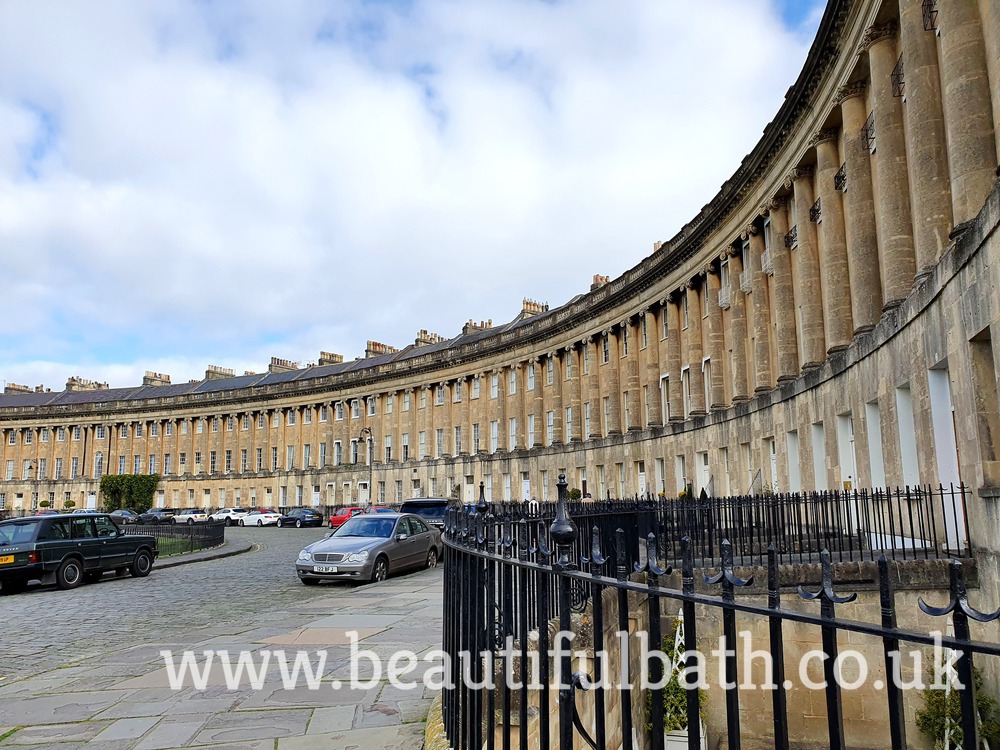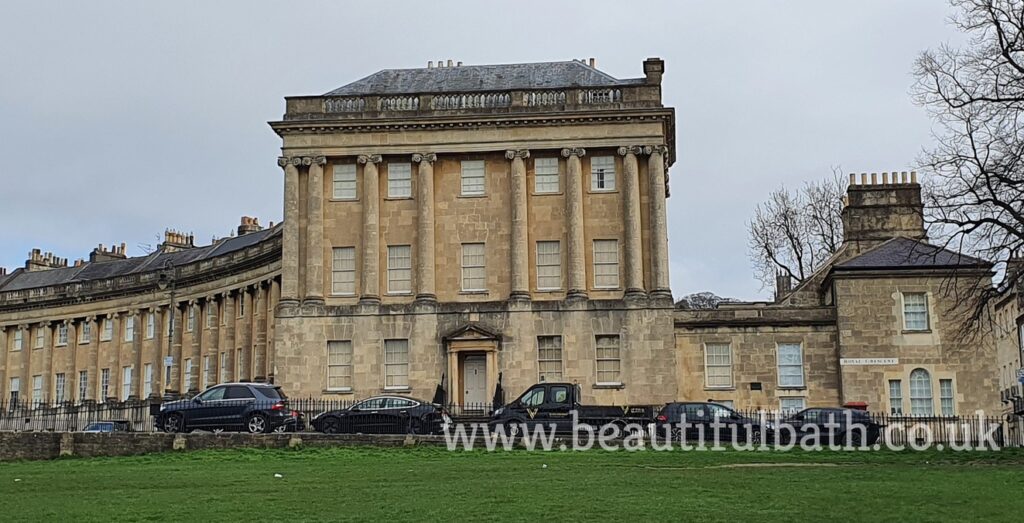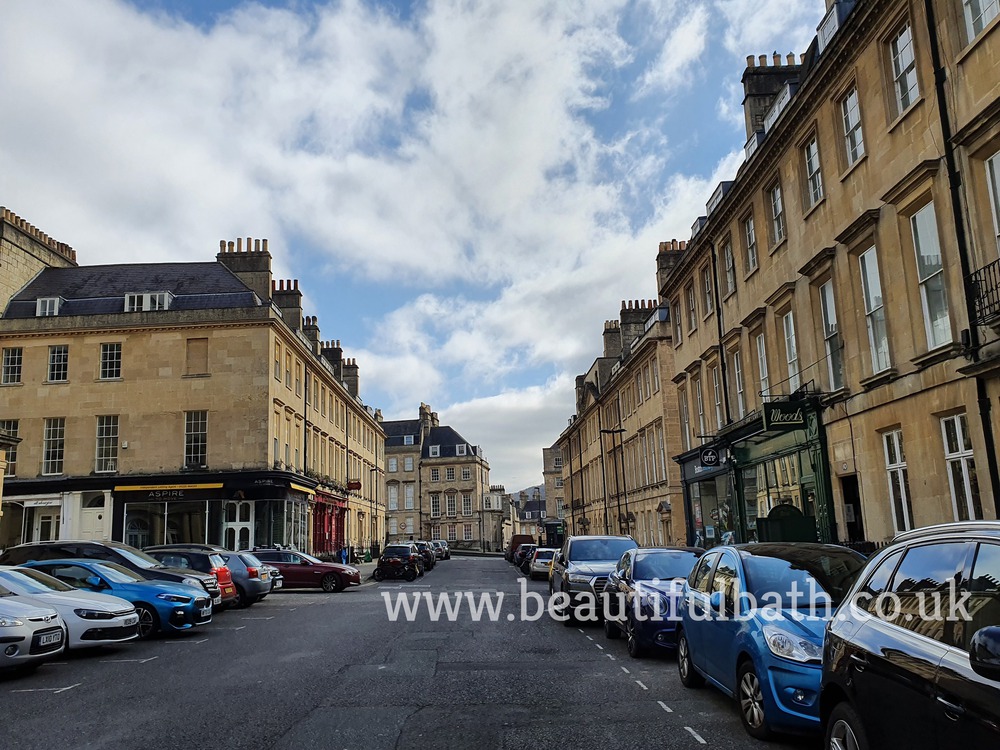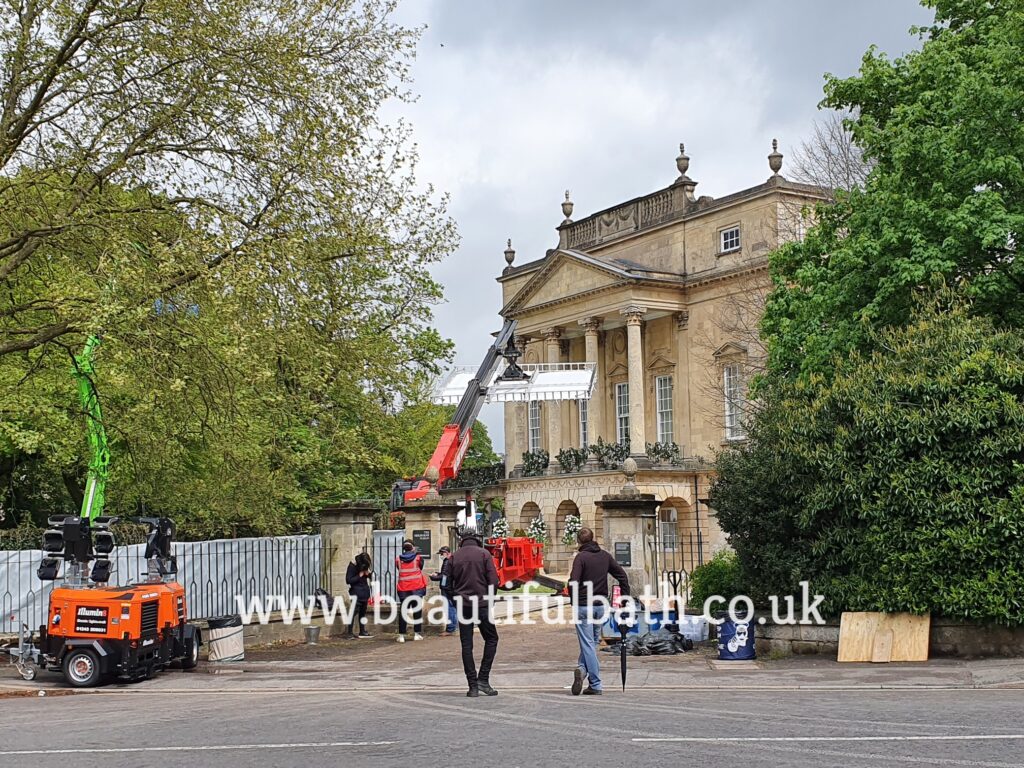Dearest Reader, Let me take you on a little tour of high society in this most elegant of cities…
Many of the outdoor town scenes for Series 1 of the Netflix Regency romance hit Bridgerton were filmed in Bath, in south-west England. You can read more about the filming, with a comprehensive list of locations, in my article: Bridgerton locations in Bath: the ultimate guide, or get a peek at the latest location filming in my post Bridgerton Series 3 filming in Bath. Watched the series, read about the Bath settings and want to explore in person? I’ve designed this Bridgerton Bath walking tour around my hometown so you can see all the principal Bath filming locations in one scenic walk. I’ve included some specific episode and time references for fans who would like to watch scene highlights on their phone while visiting the actual location.
You can visit Bath as a day trip from London and other towns, but to get the most from this beautiful city, why not consider an overnight stay to experience more? Read my top recommendations for planning a Bridgerton-inspired break in Bath.
Bridgerton walk practicalities
This walking tour will last at least an hour and twenty minutes when taken at a leisurely pace – though as it’s an attractive ramble with lots of photo opportunities and Bridgerton sights, and you’ll be reading this as you go, you may want to allow significantly longer. You’ll pass a number of good places to eat, drink and relax, so you could easily spend half the day enjoying the tour and making the most of Bath. There’s some uphill, but it isn’t very steep. As always with walking tours, I’d recommend comfortable shoes and a bottle of water. You’ll pass a couple of good picnic spots if you fancy dining al fresco like Bridgerton characters (but with more clothes on; this is a respectable town!)
The walk isn’t intended as a general tour of Bath’s historic attractions, and I’m focussing on Bridgerton-related sights. However, these obviously coincide with some of Bath’s most attractive spots, so the walk will be an enjoyable way to discover highlights of the city even for any non-Bridgerton fans in your group.
Beginning the walk: In front of Bath Abbey
Bath Abbey is an imposing and ancient church at the heart of Bath. It’s not featured in Bridgerton, but it’s a good central place to start and finish our tour, easy to find whether you are staying in Bath or visiting for the day – and you shouldn’t miss seeing the Abbey anyway. In the square in front of the Abbey’s main entrance is another great sight of the city, Bath’s Roman Baths Museum, which incorporates Bath’s Roman and Georgian thermal bath complexes. Bridgerton is set in London, so the characters don’t visit the Baths or the Pump Room alongside, but in historic Georgian times, and in many other Regency romance novels, Bath’s high-society visitors would congregate in the Pump Rooms to drink the mineral-rich hot spring water, and – importantly – to see and be seen.
(If you are arriving for a day trip by train, from Bath Spa station follow directions on your phone map to Bath Abbey, or head up Manvers Street, opposite the main station building, for around 7 minutes until you reach the Orange Grove, where there is a small green garden roundabout with an obelisk. Turn left here, and then pass along the right-hand side of the Abbey to reach its main entrance.)
Walking tour section 1: Abbey Green to Trim Street
With your back to the main door of the Abbey, turn to your left and walk down into the large square on the Abbey’s southern side, Abbey Churchyard. Continue straight on, past the benches and the balustraded wall of the Roman Baths complex. On the far side of the square, cross York Street and enter cobbled Abbey Street, straight ahead, with the Georgian Tea Room on your left.
As you pass down this short lane into pretty Abbey Green, you are entering the heart of the Bridgerton world. Does the curved white shopfront ahead on your right look familiar? It’s the Bridgerton Modiste, where the ladies of the ton go to gossip as their dresses are fitted by Madame Delacroix. And occasionally their male relatives spend time inside, engaged in less innocent pursuits. The interior of the café here (then called Pickled Greens) was used in filming, as well as the exterior.
Just before you reach the Modiste, take a look at the doorway next to the shop – the one with a triangular pediment above the door. In Series 1, Anthony, Viscount Bridgerton, pays a couple of visits to this address when his opera singer lover Siena is staying here, one of which leads to a passionate but short-lived reunion right on the threshold in front of you. I now think of this as the Raunchy Doorway. (S1 Ep4 46:40)
The ‘Modiste’ building itself currently houses the Abbey Deli, a good place to stop for a drink, a snack, or a picnic to eat later during the walk. I can recommend the orange and pistachio cake.
The little cobbled square here, Abbey Green, plays a big part in Bridgerton Series 1. As well as the frequent scenes set inside and outside the Modiste, Abbey Green also features as a marketplace and an evening destination – recognisable in most shots thanks to the identifying tree at its centre, though modern shopfronts are covered up for the TV scenes with market stalls and stacks of crates.
We’re going to head back up onto York Street, the narrow street we just crossed. But before that, take a turn around Abbey Green, and make a little detour to go under the arch at the lower end of the square. The coffee shop on your right is a drinking den, The Horse and Hop, in Bridgerton, and it’s here on the road under the arch that our hero Simon, the Duke of Hastings, falls down drunk after trying to drown his sorrows (S1 Ep5 21:00).
Now head back in the direction of the Abbey, past the Modiste and the Raunchy Doorway. Turn left on York Street, and walk along past the perimeter of the Roman Baths and under another, prettier arch. (Insider tip: looking back through this arch to the Abbey tower makes one of my favourite Bath photo opportunities, if you get the angle right). There are glimpses of this street in Series 1 in some of the Abbey Green scenes.
York Street emerges onto Bath’s busiest shopping thoroughfare, Stall Street. We’re not going to linger for the shops, however. Turn right and walk up to where the street widens in front of the historic entrance to the Pump Room, with ‘King’s and Queen’s Bath’ written over the portico. Turning your backs to this grand entrance, you will see a view you’ll recognise: the wide colonnaded Bath Street. The walk continues down this impressive street, which features in several Bridgerton scenes. When the Duke of Hastings makes his dramatic first appearance, he canters on horseback around this corner, away from the Pump Room and past Bath’s branch of Primark, its branding carefully concealed (S1 Ep1 13:40). He proceeds along Bath Street. Although Simon’s horseride never reaches the far end of the street, you can see the colonnades and the small historic bath building at the far end in a number of other shots from different angles throughout Series 1.
Walk all the way along Bath Street. You may be able to glimpse inside the Cross Bath, the small building at the end of the road. A historic place for visitors to take the waters, it’s been returned to its earlier use by the Thermae Bath Spa development.
Our route lies to the right here. Follow the colonnades of Bath Street around the corner and follow the pedestrian route up to your hard right, keeping the Little Theatre cinema on your left, and heading through the alley beyond, St Michael’s Place. Emerging onto another of Bath’s busy shopping streets, Westgate Street, turn right and then take the second left, Parsonage Lane. At the far end of the lane, passing under part of Bath’s old Mineral Water Hospital, cross over Upper Borough Walls and take the narrow lane directly opposite. This unobtrusive and picturesque little corner brings you to Trim Street.
You’re now in another of Bridgerton’s most featured locations in Bath. As the road turns to the left, you’ll recognise Gunter’s Tea Shop with its curved windows, currently a hairdresser called 12 Trim Street. In S1 Ep3, Simon and Daphne meet here (the Salacious Spoon-Licking Incident), and later talk outside. The grey door just this side of the shop was the backdrop to this emotion-filled scene when Simon ends his friendship with Daphne (S1 Ep3 39:00). The modern door buzzer panel was concealed from the cameras by a strategically-placed box tree (which, if you look carefully, would actually have obstructed the doorway). Carefully shot so that the modern buildings along the far side of the street can’t be seen, the length of this street was used repeatedly in Bridgerton. The shopfront beyond ‘Gunter’s’ was a Hat Emporium, popular with window-shopping ladies of high society in Bridgerton London.
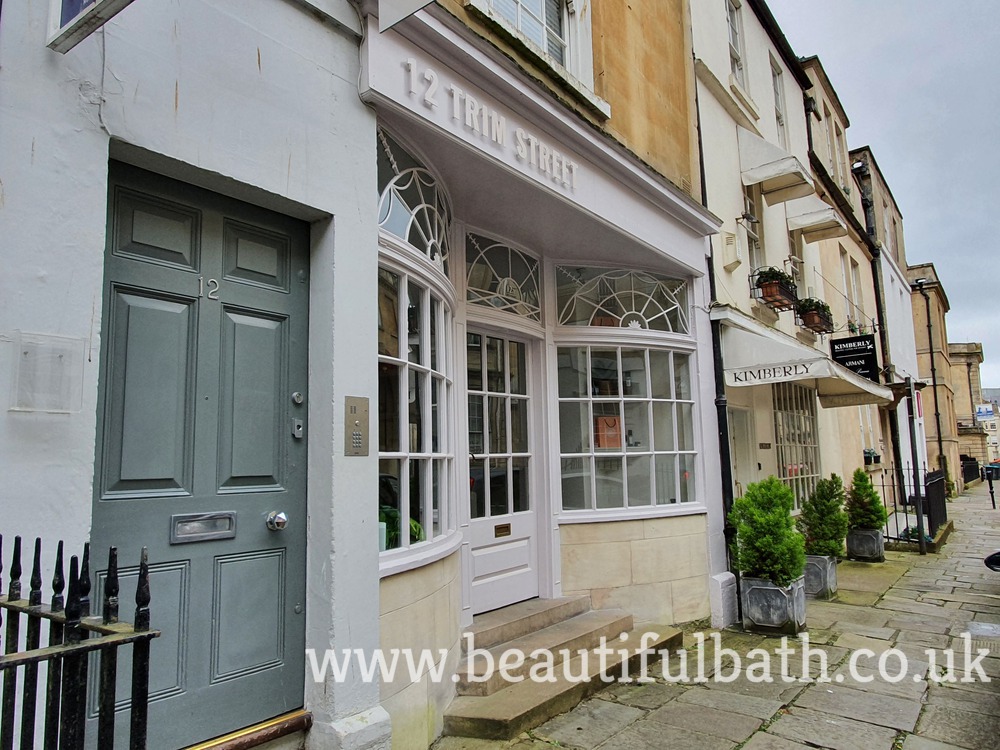
Walking tour section 2: Trim Street to the Royal Crescent
Our walking tour continues past Gunter’s and the Hat Emporium, proceeding along Trim Street and crossing over Barton Street at the end. Straight ahead you’ll find yourself in Beauford Square, a pretty, quiet little parade of Georgian houses. To your left is the original entrance and façade to Bath’s historic theatre, the Theatre Royal.
Beauford Square was another repeated filming location for Bridgerton. It’s a backdrop for dashing night-time horserides. And carriages pass along the street here on several occasions including a post-wedding journey – if you watch closely you can see the scenery ‘rewinding’ to use the same short stretch of road more than once during a short journey, including passing the same extras in identifiable costumes.
Early on in Bridgerton, Eloise and Penelope walk beside the square’s railings during a long conversation displaying their respective interests in feminism and gossip, leading to a confused discussion on the mysteries of being ‘with child’ (S1 Ep2 6:41). For filming, Netflix crew added three blossoming trees to the grassy square.
When you have walked through Beauford Square, continue until the next junction and turn right up Princes Street until you reach the corner of Queen Square, Bath’s largest and grandest square. The gardens in the middle make a good spot for a break or a picnic, maybe watching boules players competing. (You’ll soon reach a larger greener park though).
From Princes Street walk straight on in the same direction, up the side of Queen Square, and use the traffic crossing at the far corner to cross over to Queen’s Parade, a curious triangular-shaped space. You might notice signs to the Charlotte Street car park. This was used during location shooting for Series 1 as a base for the horses and carriages used in filming. Don’t follow these signs (unless you’re really interested in viewing the car park; it’s not that exciting). Instead continue uphill a few yards, keeping the angled terrace of houses on your left, until you come to a junction with a street on your right. Cross over, heading to the right to climb a short flight of steps and enter Gravel Walk. (If you’d rather avoid steps, don’t head right towards these, but instead continue through the pilllars of the entrance to the park ahead. Later you can turn right to rejoin the walking tour route by a sloping path).
Gravel Walk is an atmospheric pedestrian route, dating to 1771, that leads behind from Queen Square to the Royal Crescent, past the back gardens of some of Bath’s grandest terraces, including the curved buildings of the Circus, which you will see from the other side later on. Along the path is the entrance to one of my favourite Bath secrets, the Georgian Garden of 4, The Circus. Free to enter, this small garden was recreated to a 1760s design after archaeological excavations and now evokes the kind of formal, gravelled town garden that would have been familiar in the Regency era of Bridgerton. In summer the roses are wonderfully fragrant.
At the end of the Gravel Walk you reach a path leading up to the Royal Crescent. Ahead and down the slopes to the left is the Royal Victoria Park, a large and green park with bandstand, toilets, lawns, shade and a botanical garden. Looking up the slope you’ll see the ‘Featherington House‘, No.1 Royal Crescent – more about this later.
Our walking tour takes us first across the park, taking the path ahead, and then up and around the curving Royal Crescent itself, back to a spot just above this junction at the end of the Gravel Walk. (If you took the step-free route, a path leading up past flowerbeds brings you to this spot. If you want to take a break in the park or enjoy a picnic, this is a good time. Alternatively, if you’re in a hurry, you might want to take a right turn directly up to the Royal Crescent now, and cut off the scenic loop I’ve described above, to move on faster to the next stage of the walk.)
As you walk across the park, you’ll see that in front of the Royal Crescent, a sunken wall and ditch divides a private higher-level lawn belonging to the Royal Crescent from the public park below. Called a ha-ha, these walls were commonly used at the garden boundaries of England’s stately homes to give the owners an uninterrupted view over countryside while keeping livestock out; it’s rare (or unique) to find one in a town setting.
Turning right and walking up Marlborough Buildings brings you up to the farther end of the Royal Crescent, past some good spots for Crescent photo opportunities. Stroll back along the front of the Crescent itself, not forgetting to observe the attractive courtyard gardens below pavement level.
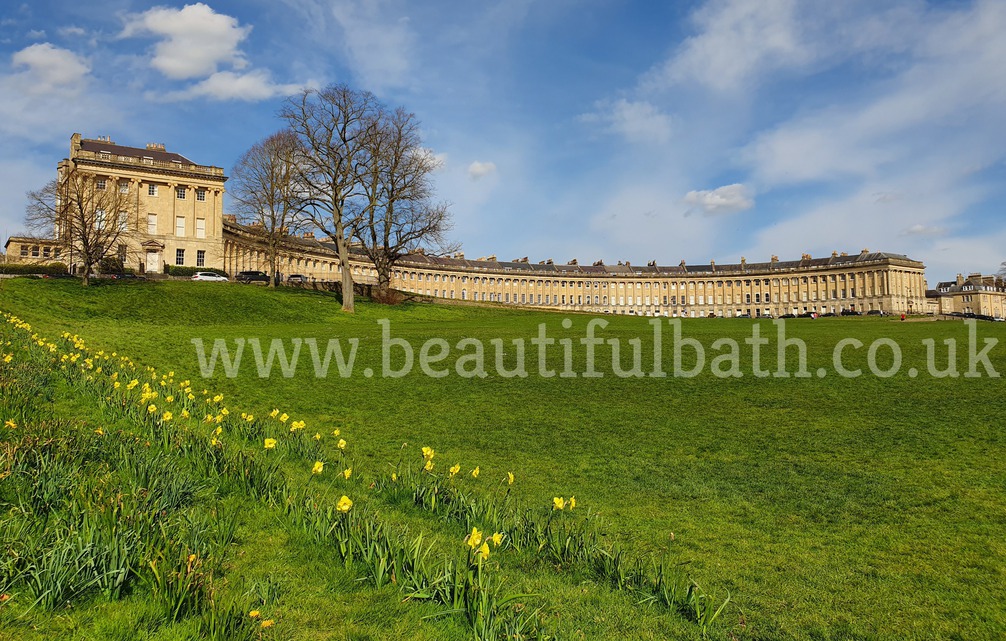
The Royal Crescent features in a lot of the scene-setting sequences in Bridgerton used to transport the viewer to Regency London, right from the beginning of the first ever episode: errand boys deliver the latest scandalsheet from Lady Whistledown, and elegant couples promenade. In another late-night call on Siena the opera singer, who is now shacked up with another man, Anthony arrives at a Royal Crescent front door with flowers (S1 Ep8 44:30). And in S1 Ep4, the characters gallop on horseback along the Royal Crescent and Beauford Square at night on their way to duel at daybreak.
At the farther end of the Crescent, in S1 Ep3, Simon and Lady Danbury take a carriage ride together – another journey when the background view, this time of the railings, lawns and far end of the Royal Crescent, repeats itself as the travellers make a journey without progress, unlike this tour.
Walk section 3: Royal Crescent to Milsom Street
When you’ve walked the length of the Royal Crescent you’ll come to No. 1 Royal Crescent, on the corner. The façade facing the park was used as the basis for the Featherington House in Bridgerton, with its white front door painted blue, and fancy decorations added to the restrained, formal exterior using CGI. Apparently at an earlier stage of filming, No. 1 was intended to take the part of Bridgerton House, but later the homes of the two fictional families were swapped, with the Ranger’s House in Greenwich (London), used as the Bridgerton Home, with its curvier and more welcoming appearance. No. 1 Royal Crescent is a Georgian house museum, decorated and furnished as it would have been in the late 18th century, shortly before Bridgerton was set.
Continue along Brock Street, which leads onwards and away from the Royal Crescent, lined with elegant Georgian townhouses. Along here and on Margaret’s Buildings, to the left, there are a few classy places to eat, drink and shop. Our walking tour continues onwards, though, up to and across the Circus, a truly grand circular parade of palatial buildings and one of Georgian Bath’s greatest showpieces.
Follow the Circus around to the left – again there are some fine courtyard gardens to admire – and turn off onto Bennett Street. On your right is our next Bridgerton location: the Assembly Rooms. Our route leads to the right, across the pedestrian space in front of the building’s entrance. Public balls and assemblies were held here in Bath’s Georgian heyday; the building was bombed in the Second World War and subsequently rebuilt. The interior was used for ballroom scenes in Bridgerton; its Tea Room standing in for Lady Danbury’s ballroom in S1 Ep1, where Simon and Daphne first meet. You can tour the rooms (check the latest opening times in advance), or even hire them for your own event. Until October 2022, the Assembly Rooms also house the Fashion Museum, which has a fabulous collection of historic costume including clothes from the Regency era.
Once you’ve passed the entrance to the Assembly Rooms you’ll emerge in Alfred Street, a handsome Georgian street rather spoiled by the number of parked cars. This featured in the very first moments of Bridgerton, in a scene-setting montage with extras strolling and carriages rolling along.
Turn left along Alfred Street and then take the first right, Bartlett Street, a pedestrian lane descending past cafés, clothing boutiques and Bath’s antique market. Cross George Street at the bottom of the road, then turn right until you come to the top of Milsom Street.
Walk section 4: Milsom Street to the Abbey via the Holburne Museum
Milsom Street, a handsome sloping road heading downhill towards the heart of modern Bath, has been a busy shopping street for centuries now. If you cross and walk down the right-hand side, look across the street for old shop-signs painted on buildings, including one for a lending library.
At the bottom of Milsom Street, follow the road as it turns left and continue to the junction at the end (opposite Bath’s branch of Waitrose). Turn right along Northgate Street until you reach the corner of Bridge Street and the High Street, facing a large complex of buildings which includes a covered market – well worth visiting – and Bath’s Georgian Guildhall, just beyond the market entrance. The Guildhall was used for interior ballroom scenes in Bridgerton: the Banqueting Room on its first floor was the setting for the Rambury ball in S1 Ep2. An 80-ft long hall, this is grandly decorated, with a green colour scheme, fluted columns, portraits, friezes and decorative plasterwork, as well as four large chandeliers and a musicians’ gallery. In real life, public events and dances take place here.
From the Guildhall, if you want to cut the walk short, you can simply walk a few yards further down the High Street to Bath Abbey, where you started. If you’re happy with another 20 minutes’ walking, continue with these directions to discover Lady Danbury’s house, and another historic park.
Return to the corner of the High Street and Bridge Street, and take Bridge Street down towards Pulteney Bridge. Cross this famous bridge, lined with shops (you’ll get a good view of its exterior later), and continue straight ahead over Laura Place and down Great Pulteney Street to its far end. Great Pulteney Street is one of Bath’s (and Britain’s) grandest streets, originally intended as the start of a large development covering this part of Bath, across the river from the town centre. After a financial crisis, and as Bath’s popularity waned, the schemes were never finished and you’ll see that most of the side-streets are very short.
The Holburne Museum, at the end of Great Pulteney Street, is one of the most recognisable buildings from Bridgerton, thanks to its starring role as Lady Danbury’s house. The elegant building is introduced early on in S1 Ep1 and soon Simon’s dramatic arrival on horseback brings him through the gates (S1 Ep1 13:48). Only the exterior of the building is used in the series, but it appears quite frequently, when Lady Danbury is hosting balls or parties, and as the setting for conversations with Simon. In some shots you can also glimpse Sydney Buildings, the fine Georgian terrace opposite the museum. Both the real-life Queen Charlotte and Jane Austen lived for a time in this row.
Walking past the Holburne Museum in May 2021 I found a film crew with huge amounts of equipment set up outside the museum, tall screens to hide the action and through the open gate I saw familiar-looking flower displays festooning the front of the building; signs that Lady Danbury and Bridgerton might be back in residence for Series 2 …
The museum houses an interesting collection of paintings – with some fine examples from Bath’s heyday – as well as ceramics and other curios. There are good exhibitions held here too; if you have time during your stay, and appreciate art, I’d recommend a visit.
At the time of writing, the museum’s café – in the striking contemporary rear extension to the building – has an outdoor covered terrace, its marquee festooned with plastic wisteria and named ‘Lady Danbury’s Dining Terrace’ – an appropriate place to stop for a Bridgerton-themed break. The park behind the museum, Sydney Gardens, dates back to Bath’s glory days and was a resort for Bath’s Georgian visitors to enjoy entertainment and maybe assignations; a Bath version of London’s Vauxhall Gardens. The Holburne Museum was then the Sydney House, or Sydney Hotel, and part of the garden’s attractions: a dining place for high-society visitors. The park still has some handsome period features, including a ‘temple’, as well as a railway and canal running picturesquely through it; it’s a nice place for a stroll or a picnic.
From the Holburne Museum, our tour retraces our route back to Pulteney Bridge along Great Pulteney Street. Across the bridge, turn left and follow the balustrade of Grand Parade to enjoy the fine view looking back at the bridge.
Following Grand Parade around to the right and crossing the Orange Grove will bring you back to the Abbey where we started our guided tour.
(If you need to return to the railway station, the quickest route is to ignore the Abbey, keep the Orange Grove on your right and continue along Pierrepoint Street, above the green Parade gardens, cross the traffic lights at the end and keep straight on along Manvers Street to the station at the far end).
A fond farewell
Gentle Reader, I hope you have enjoyed this introduction to the pleasures of Bath and its connections with the illustrious people and places of Bridgerton.
After your walk around the streets, what could be better than a coffee, or tea and cake at one of our many small independent cafés? If you’ve appreciated Bath, you can help the city by supporting our local businesses and museums during your stay. And if you’ve found these free walk directions helpful, please consider donating the equivalent of a cup of coffee to show your thanks to this website and help me afford to keep it online.
- Donate the equivalent of a coffee to me at Ko-fi.com (thank you!)
- More detail on Bath’s Bridgerton places
- Plan a Bridgerton weekend in Bath, with tips on where to stay for the perfect Bridgerton-style experience
- Series 3 filming in Bath, January 2023 (Holburne Museum and Edward Steet)
- Book accommodation in Bath or the countryside nearby (affiliate link)

